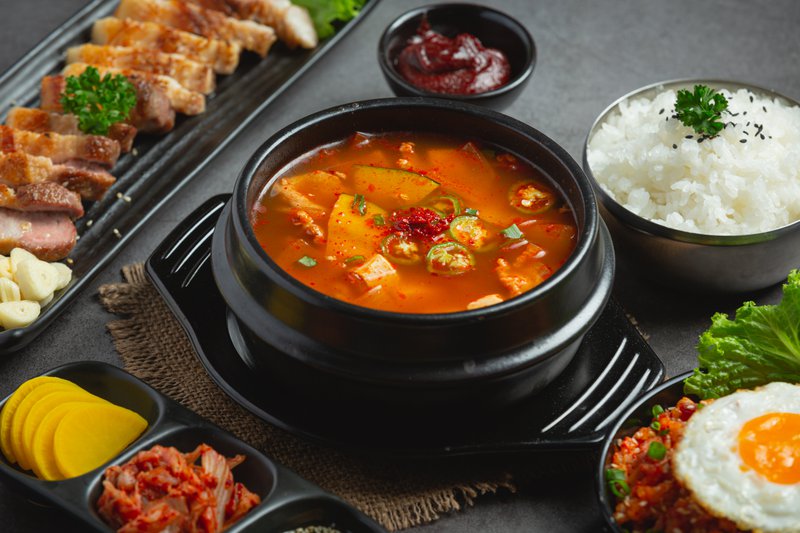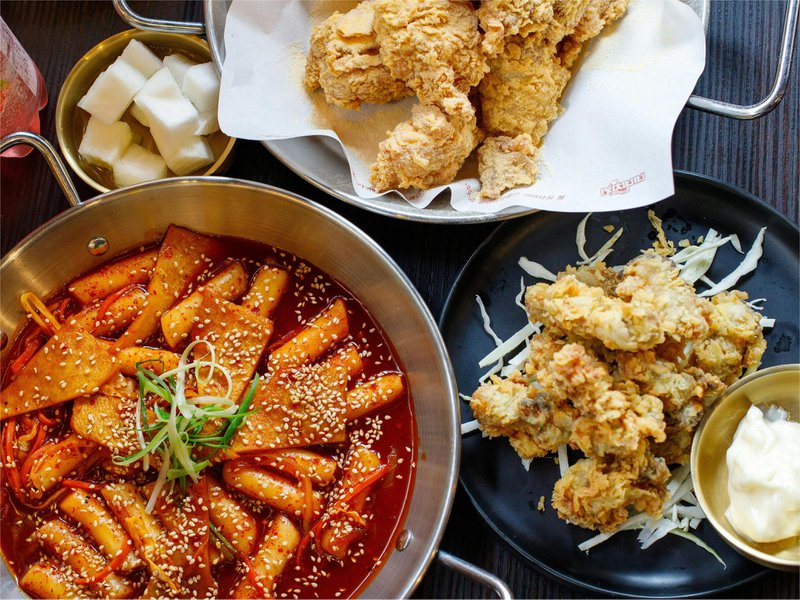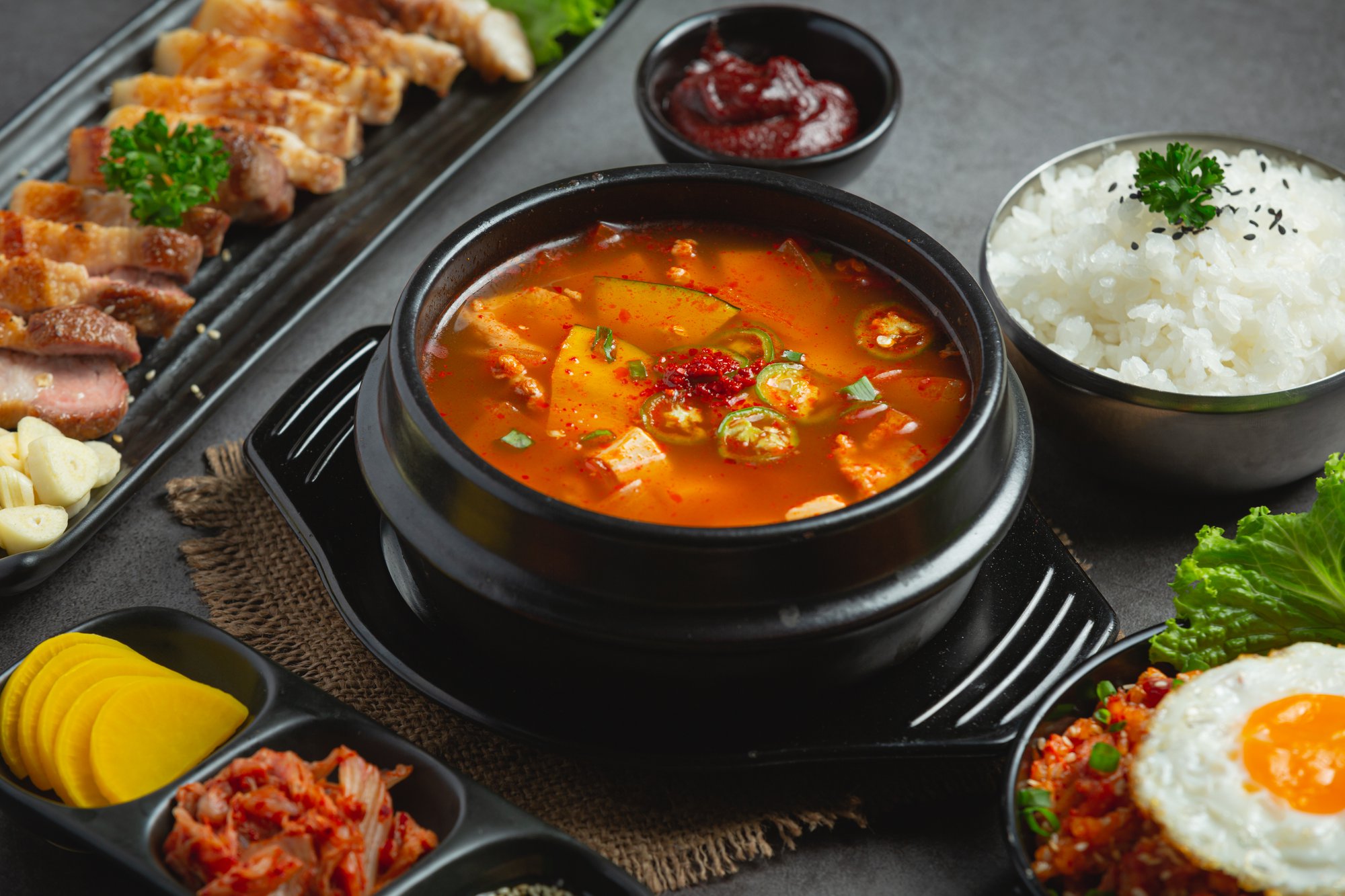
Introduction
Korean cuisine is rapidly shifting from a cultural phenomenon to a commercial engine, reshaping global demand across packaged foods, foodservice, and ready-to-eat formats. In 2024, K-Food Plus exports reached a record USD 13.03 billion, reflecting sustained global appetite for Korean flavors, formats, and innovation.
Yet many international F&B players misread the real drivers behind Korean cuisine’s rise. Some treat it as a trend tied to pop culture, while others underestimate the role of technique, flavor architecture, and government-backed export strategy. Winning in this space requires understanding how Korean cuisine is evolving and why it has become a scalable platform for global growth.
The following six insights break down the underlying forces driving Korean cuisine’s global rise and clarify where the strongest opportunities now lie for brands operating across retail, foodservice, and innovation.
6 Key Insights Driving Korean Cuisine’s Global Growth
1. Korean Cuisine Evolves Through Global Exchange, Not Fusion
Korean cuisine’s global momentum is not happening by chance. It is the result of a deliberate strategy that blends cultural influence with structured international outreach. Rather than relying on viral dishes or passing online trends, Korea is investing in the long-term globalization of its food ecosystem through policy, trade partnerships, and coordinated industry programs. This approach has transformed Korean cuisine into a stable, scalable platform that international consumers increasingly recognize and trust.
A clear example is Korea’s role as partner country for Anuga 2025, where the government and leading manufacturers used the world’s largest F&B trade fair to highlight Korea’s strengths in innovation, sustainability, and export-ready product development.
This global exchange model strengthens the foundations of Korean cuisine trends in 2026. It ensures that Korean flavors, techniques, and product formats continue gaining traction in markets from North America to Southeast Asia, supported by consistent messaging and high-quality industry engagement.
Strategic takeaway
Korean cuisine is advancing through intentional global strategy, not trend cycles. For F&B brands, this creates a reliable platform for long-term innovation, market entry, and cross-category growth.
2. Korean Flavors Are Becoming Global Building Blocks
One of the most important Korean cuisine trends in 2026 is the shift from “Korean-inspired” novelty to core flavor integration across global categories. Korean flavors are no longer confined to traditional dishes or niche ethnic aisles. They are being used as building blocks in snacks, sauces, ready meals, plant-based products, and even bakery items. This reflects a broader change in how consumers perceive Korean cuisine: not as a specialty cuisine, but as a versatile, expressive flavor system that elevates familiar formats.

Export performance reinforces this shift, with Korean flavor-led categories showing strong international momentum:
- Ramyeon: USD 1.25 billion (+31.1 percent)
- Processed rice products: USD 299.2 million (+38.4 percent)
- Kimchi: USD 163.6 million (+5.2 percent)
Innovation platforms tell the same story. At Anuga 2025, Korea highlighted next-generation applications such as:
- Vegan kimchi and kimchi spreads
- Allergen-free jang alternatives
- Reformulated fermentation-based ingredients for global-friendly formats
Industry commentary supports this trajectory. The Food Institute reports that Korean cuisine is “ascendant” across global restaurant and retail, driven by its unique and memorable flavor identity.
Collectively, these signals mark a turning point: Korean cuisine is shaping the flavor architecture of modern global food innovation, not simply benefiting from cultural momentum.
Strategic takeaway
Korean flavor cues offer immediate product differentiation and strong consumer recognition. Integrating them into cross-category innovation pipelines is a low-risk, high-reward strategy for brands seeking to stand out in crowded markets.
Learn how Korean flavor systems translate into global product strategies in categories like beverages through our South Korea spirits market guide
3. Technique-Led Innovation Is Redefining Modern Korean Food
A defining Korean cuisine trend in 2026 is the shift toward technique-led innovation, where the focus is not only on flavor but on how dishes are made, refined, and scaled. Korean food continues to evolve through a combination of culinary craftsmanship and advanced food technology, making it far easier for global brands to translate Korean formats into consistent, commercially viable products. This move from novelty to precision is a major reason Korean cuisine is becoming a stable platform for innovation across retail and foodservice.
National investment is accelerating this shift. In 2025, the Ministry of Agriculture, Food and Rural Affairs (MAFRA) committed KRW 108.8 billion to strategic areas including smart farming, green biotechnology, food tech, and the Future Innovation Growth Fund.
These initiatives support advancements such as:
- More precise fermentation processes that enhance flavor consistency
- Premium ready-meal development that maintains authentic Korean profiles
- Improved textures through modern cooking and processing methods
- Scalable production of Korean sauces, broths, and bases for global distribution
Together, these developments show how Korean cuisine is becoming increasingly compatible with high-volume manufacturing, premium convenience formats, and international supply chains.
Strategic takeaway
Technique-led Korean innovation enables brands to create premium, repeatable, and scalable products. By leveraging modernized fermentation, improved textures, and high-quality ready-meal technology, global F&B companies can introduce Korean cuisine into frozen, chilled, and ambient categories with confidence.
Selecting the right distribution partner is essential to ensuring successful market entry. Read more on our list of the top 19 food distributors in South Korea.
4. Korean Street Food Is Now a Global Menu Strategy
Korean street food has become one of the most powerful engines behind the global rise of Korean cuisine. Its formats are bold, visually distinctive, highly shareable, and operationally simple, making them ideal for both established chains and emerging concepts. In 2026, Korean street food is no longer a social-media trend. It is a scalable menu strategy for global QSR, convenience retail, and delivery-heavy foodservice models.

Market expansion confirms this trajectory. In the United States, Korean restaurant locations grew 10 percent in 2024, driven by demand for Korean fried chicken, K-BBQ concepts, and viral formats such as Korean corn dogs.
International markets are responding similarly. In London, The Times reported the launch of a Korean-style hybrid convenience store featuring robotic cooking systems and a full lineup of Korean street-food SKUs, signaling how Korean cuisine is influencing not only menus but retail innovation and foodservice automation.
These developments show how Korean street food is helping Korean cuisine shift from niche cultural influence to mainstream global dining behavior, particularly among younger consumers seeking expressive, high-impact flavors.
Strategic takeaway
Korean street-food formats offer fast, low-friction entry points into Korean cuisine. Their visual appeal, operational simplicity, and delivery-friendly nature make them ideal for QSR brands, convenience retailers, and operators looking to capture rising demand with minimal menu disruption.
Explore how broader flavor innovation is shaping menus worldwide in our analysis of 6 Flavor Trends That Will Define 2025 and Beyond
5. Health, Convenience, and Digital Consumption Are Reshaping K-Food
Korean cuisine is well-aligned with the global shift toward convenience, wellness, and digital-first consumption. The format of their meals —rice bowls, ready meals, fermented sides, and heat-and-eat dishes—maps naturally onto these changing behaviors. This structural fit is one reason Korean food continues to scale in both retail and foodservice.
Market data reinforces this momentum. In South Korea, packaged food demand remains strong:
- Packaged food market: USD 30 billion in 2024, projected to reach USD 36.3 billion by 2029
- Convenience food market: USD 9.7 billion in 2024, projected to reach USD 16.2 billion by 2033
- Food delivery share: 11.6 percent of all online sales, according to the USDA
Health initiatives amplify the trend. The MFDS “healthy food corner” program in convenience stores increased sales of lower-sugar beverages by 30 percent, showing how regulation and consumer demand are aligning.
Together, these shifts position Korean cuisine as a natural fit for global categories driven by wellness, convenience, and digital purchasing behaviors.
Strategic takeaway
Korean cuisine is well suited for ready-to-eat, snack, beverage, and better-for-you innovation because its existing formats already align with consumer priorities. Brands can scale Korean-inspired products quickly across channels that favor convenience and health-driven choices.
6. Korea’s Cultural Soft Power Is Increasing Global Appetite for K-Food
Unlike many national cuisines that rise through restaurant expansion alone, Korean cuisine accelerates globally through the influence of K-dramas, K-pop, gaming culture, digital creators, and film. These cultural exports shape consumer perception long before a consumer ever tastes Korean food, making K-Food one of the most effective beneficiaries of the broader Hallyu wave.
Additional indicators reinforce this momentum:
- Brand Finance Global Soft Power Index 2025: Korean cuisine is identified as a rising pillar of Korea’s cultural and national influence.
- Academic studies: Exposure to Korean cultural content significantly increases purchase intention for Korean cuisine across markets such as Malaysia, Indonesia, and China.
This ecosystem of cultural influence creates a unique environment where global consumers become familiar with Korean cuisine long before formal market entry occurs.
Strategic takeaway
Korean cuisine benefits from cultural momentum that directly amplifies demand. Brands can strengthen their impact by pairing Korean flavor innovation with cultural storytelling, creator partnerships, and content-driven marketing for greater reach and faster consumer adoption.
Conclusion: What This Means for Global F&B Brands
The outlook for Korean cuisine in 2026 highlights a category that is growing through strategic advantages rather than temporary trends. Rising exports, strong flavor identity, innovation through techniques, global adoption of street-food formats, health-oriented product development, and the influence of Korean culture are all contributing to its sustained growth. These factors position Korean cuisine as a robust platform with significant commercial potential.
For global F&B brands, the path forward is clear. Korean cuisine should be treated as a long-term growth opportunity rather than a short-lived trend. Its distinctive flavor systems offer flexibility for innovation across categories, its formats resonate with consumers worldwide, and its cultural appeal accelerates brand recognition.
Brands that invest early in authentic flavor development, scalable formats, and localized products will be better positioned to capture the growing demand for Korean cuisine. As Korean food continues to shape consumer expectations across markets from the US to Southeast Asia to Europe, brands that prioritize it strategically will gain a significant competitive advantage in 2026 and beyond.
FAQs
1. Why is Korean cuisine becoming so influential in the global food industry?
Korean cuisine is gaining global influence because it combines strong cultural visibility with flavor systems that are easy for consumers to understand and enjoy. Its bold heat, fermented depth, and balanced profiles work across many categories, from sauces to snacks and ready meals. As exports grow and K-pop and K-dramas expand global reach, Korean cuisine becomes a familiar reference point that food manufacturers and restaurant operators can confidently innovate around.
2. How are global consumer trends shaping the evolution of Korean cuisine?
Global demand for convenience, bold flavors, and healthier formats is accelerating interest in Korean cuisine. Consumers are more open to fermented foods, spicier dishes, and globally inspired street-food formats. Korean flavors fit these preferences naturally. This alignment makes Korean cuisine a strong foundation for new product development in retail and foodservice, especially in ready-to-eat meals, snacks, and premium sauces.
3. What opportunities does Korean cuisine create for F&B manufacturers and foodservice brands?
Korean cuisine creates multiple growth opportunities because its flavor cues can be integrated into mainstream products without losing identity. Manufacturers can develop Korean-inspired marinades, snacks, broths, and ready meals that stand out in competitive categories. Foodservice brands can experiment with street-food formats like Korean fried chicken or tteokbokki, which consistently attract younger consumers. As cultural interest expands, brands see higher trial rates and faster menu adoption.
4. How does Korean cuisine balance authenticity with global adaptability?
Korean cuisine maintains authenticity through its recognizable flavor pillars—fermentation, heat, acidity, umami, and balance—while staying flexible enough to incorporate new ingredients and techniques. This makes it easy to localize for different regions without losing its core identity. Whether reinterpreted through plant-based proteins, modern cooking methods, or hybrid street-food formats, Korean cuisine retains the elements that consumers associate with “Korean flavor.”
5. What are the most important Korean cuisine trends to watch in 2026?
Key Korean cuisine trends for 2026 include the rise of technique-led innovation, premium ready-meal formats, globally scaled street food, and expanded use of Korean flavors in cross-category product development. There is also growing emphasis on sustainability, smart farming, and fermented ingredient reformulation. These trends show how Korean cuisine is evolving into a long-term global platform, not a temporary trend, making it valuable for F&B strategists and R&D teams.
Take Action
At GourmetPro, we help global F&B brands cut through the uncertainty of fast-changing Asian markets. Our network of senior, in-market experts gives you the clarity and direction to enter, grow, and win with confidence — whether you are evaluating Korean cuisine trends, shaping your APAC innovation pipeline, or planning regional expansion.
Book a strategy call today to get tailored insights for your brand and turn emerging market trends into a winning growth strategy.


%206.png)
.svg)






.svg)



.svg)
.svg)
.svg)

.svg)








































.png)




























































